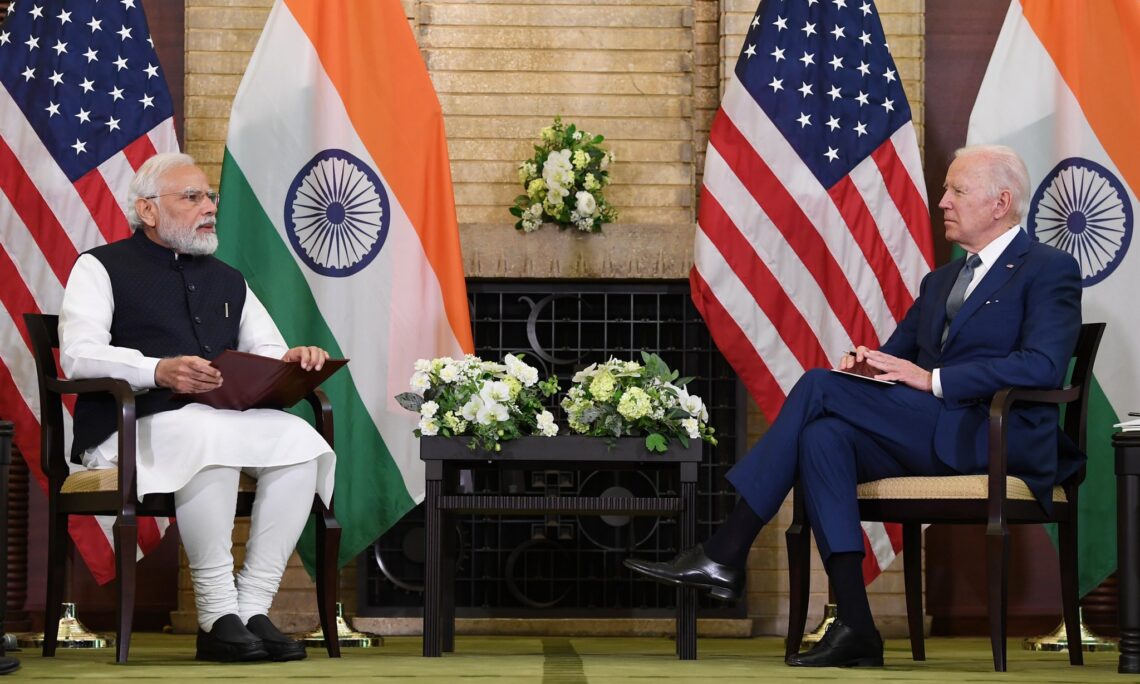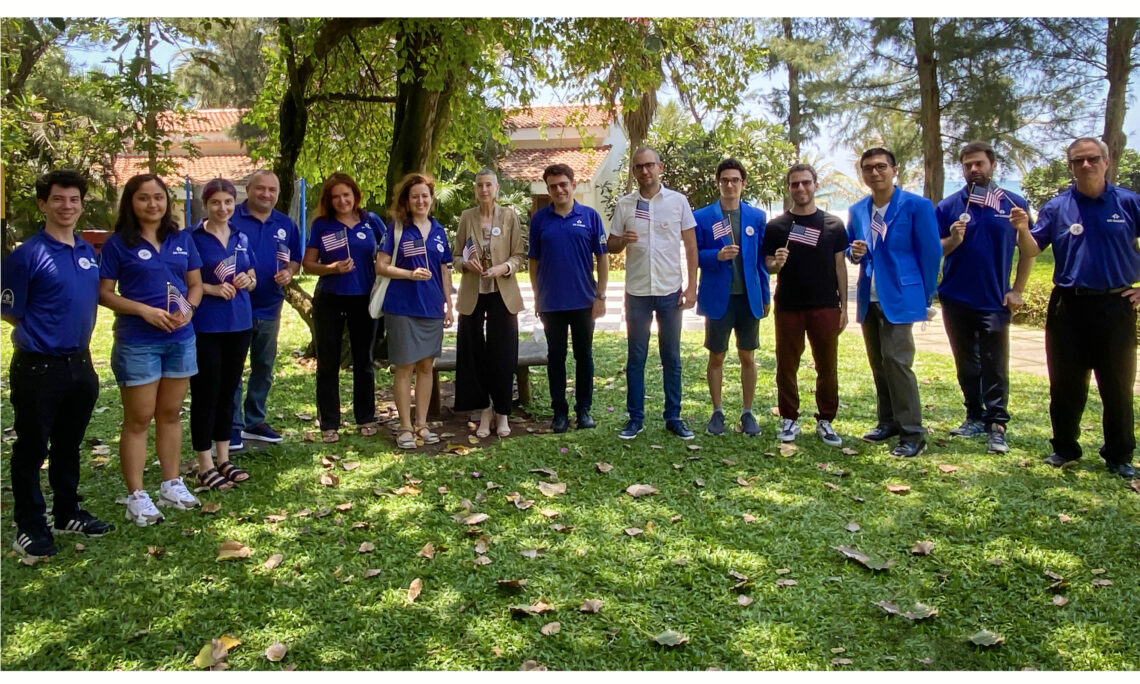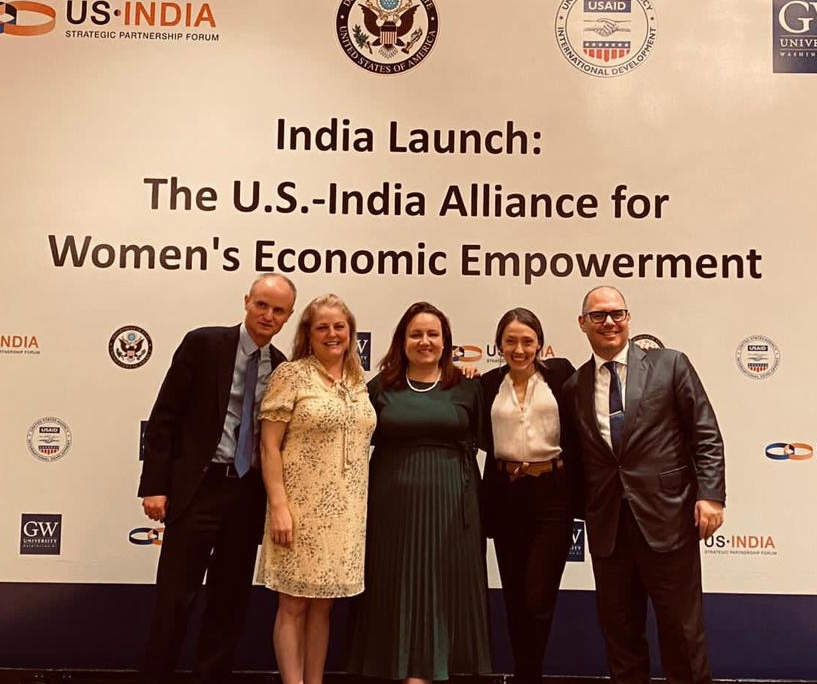President Biden met with Prime Minister Narendra Modi of India today in Tokyo to reaffirm their commitment to work together for a more prosperous, free, connected, and secure world. The leaders reviewed the progress made in the U.S.-India Comprehensive Global Strategic Partnership. They committed to deepen our Major Defense Partnership, encourage economic engagement that benefits both countries, and expand our partnership on global health, pandemic preparedness, and critical and emerging technologies. The leaders discussed their shared belief in the urgent need to address climate change. They looked forward to enhancing their partnership to accelerate India’s just energy transition, including through the U.S.-India Climate and Clean Energy Agenda 2030 Partnership, especially in the areas of renewables deployment, decarbonizing the energy and industrial sectors, zero-emissions vehicles, adaptation, and mobilizing related investment in India.
President Biden condemned Russia’s unjustifiable war against Ukraine. The leaders’ committed to continue providing humanitarian assistance, and discussed how to cooperate to manage disruptions caused by the war in Ukraine, in particular the rise in energy and food prices, to protect their respective citizens and the world.
President Biden and Prime Minister Modi renewed their commitment to a bilateral relationship rooted in a shared tradition of democracy, freedom, tolerance, and equal opportunity for all citizens. President Biden welcomed India’s role in the Summit for Democracy’s Year of Action.
They expressed pride in the achievements of the third Quad Leaders’ Summit held today and the growing strength of the Quad partnership. The leaders affirmed the outcomes of the U.S.-India 2+2 Ministerial Dialogue held on April 11 which made evident that the United States and India have a breadth of cooperation matched by few other partnerships. Proving that democracies can deliver for the global good:
- President Biden welcomed India’s decision to join the Indo-Pacific Economic Framework, and expressed confidence that India’s participation will help ensure an open, connected and prosperous Indo-Pacific.
- The two countries concluded an Investment Incentive Agreement which provides a framework for DFC to continue to expand its investment in India for private sector-led projects in critical areas such as renewable energy, agriculture, health, and SME financing.
- The two countries are renewing the Indo-U.S. Vaccine Action Program, which since its establishment has yielded several success stories towards the discovery, development, and manufacture of India’s first indigenous and low-cost vaccines to address rotavirus and COVID-19. The two leaders also discussed expanding collaboration to combat antimicrobial resistance, as well as non-communicable diseases such as diabetes and cancer”
- The two countries announced India’s joining the Combined Military Forces-Bahrain as an associate member.
- The leaders welcomed the launch of a United States–India Initiative on Critical and Emerging Technologies (iCET), spearheaded by the National Security Councils of the two countries to expand partnership in critical and emerging technologies.
- The U.S. plans to join six of India’s Technology Innovation Hubs to support at least 25 joint research projects in 2022 in areas such as artificial intelligence and data science to advance progress in applications such as agriculture, health and climate. The U.S. National Science Foundation and Department of Science and Technology of India will deepen this cooperation through the new U.S.-India Initiative on Critical and Emerging Technology.
- Recognizing the fundamental role maritime domain awareness plays in preserving economic security and in responding to humanitarian crises, the leaders noted with pleasure the establishment of the Indo-Pacific partnership for maritime domain awareness.
- The U.S. and India committed to expanding cooperation in new defense domains, including through space, cyber, and launching a dialogue on Artificial Intelligence this year.












